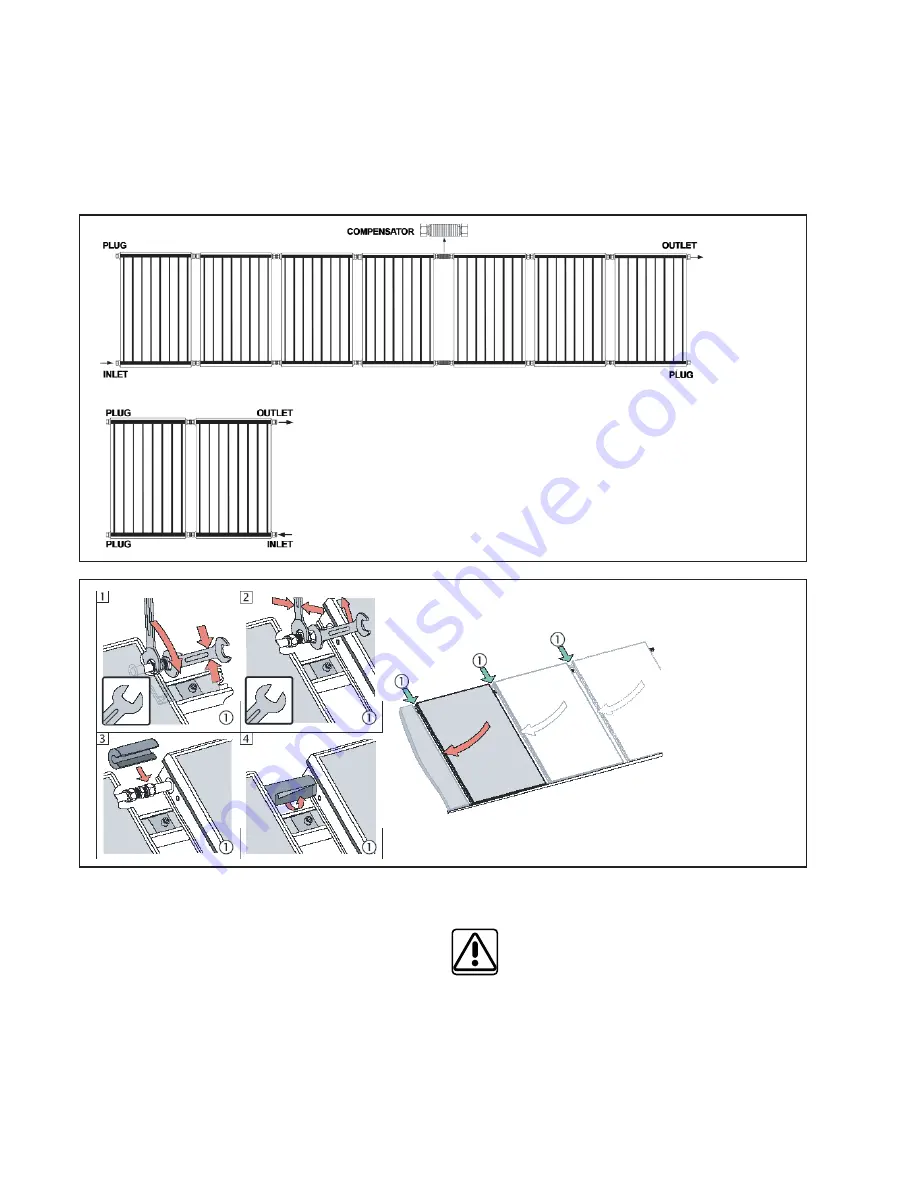
17
Fig. 22a:
The recom-
mended
method of
collector
intercon-
necting
Fig. 22b:
Alternative
one-sided
connection
method
Fig. 23: Col-
lector con-
necting (the
pic. shows
connection
of the upper
fi tting; the
lower fi tting
shall be
connected
and tighte-
ned in the
same way.)
Collectors may be also connected as shown in Fig. 22b.
This kind of connection is permitted when only
max. 2
collectors
are used and
the max. fl ow rate is 1l/min/
collector
. Then the cold liquid inlet is at one side bottom
and the hot liquid outlet is at the same side top. Both the
other ends shall be plugged.
At the inlet into a collector array, a brass elbow shall be
installed with a reducing piece to the connecting pipe.
A brass X-piece shall be installed to the outlet from the
collector array that will enable connection to the piping,
sheath installation for the collector temperature probe
and eventual installation of a ball valve and an automatic
air discharge valve. The brass elbow and X-piece are
involved in Regulus connection kit, code 7710 and in
Connection kit for landscape installation, code 14134
All solar components must be carefully and safely sealed
and must be made of material resistant to glycol and
temperatures up to 160 °C. For connection piping we
recommend using KOMBIFLEX stainless-steel
fl
exible
pipes, or copper pipes connected by soldering.
In no event plastic tubes can be used for inlet/outlet
piping as they do not meet the operation requirements
for solar systems.
Pipes for collectors can be lead through disused chim-
neys, ventilation shafts or grooves in a wall. In order to
prevent high thermal losses through convection, open
shafts shall be properly sealed. Also thermal dilatation
shall be remembered and pipes
fi
tted with compensators
or other compensation elements.
Piping shall be connected to the house earthing.
Pipes of the solar system must be
fi
tted with thermal in-
sulation, so that thermal dissipation from the pipes does
not deteriorate a total ef
fi
ciency of the solar system. The
thermal insulation must be resistant to temperatures
up to 160 °C, for outdoor piping also a UV protection is
essential as well as non-deliquescence of the material.
For indoor piping, the thermal insulation should be at
least 13 mm thick, for outdoor piping at least 19 mm.
Summary of Contents for KPG1-ALC
Page 1: ...1 1 Solar System with KPG1 ALC Collectors EN v 1 4 Installation and Operation Manual...
Page 26: ...26 84 70 6 1 1 2151 2010 70 1212 1170 21 21 22 15 CONNECTION DIMENSIONS...
Page 28: ...28...
Page 30: ...30...
Page 31: ...31...
















































